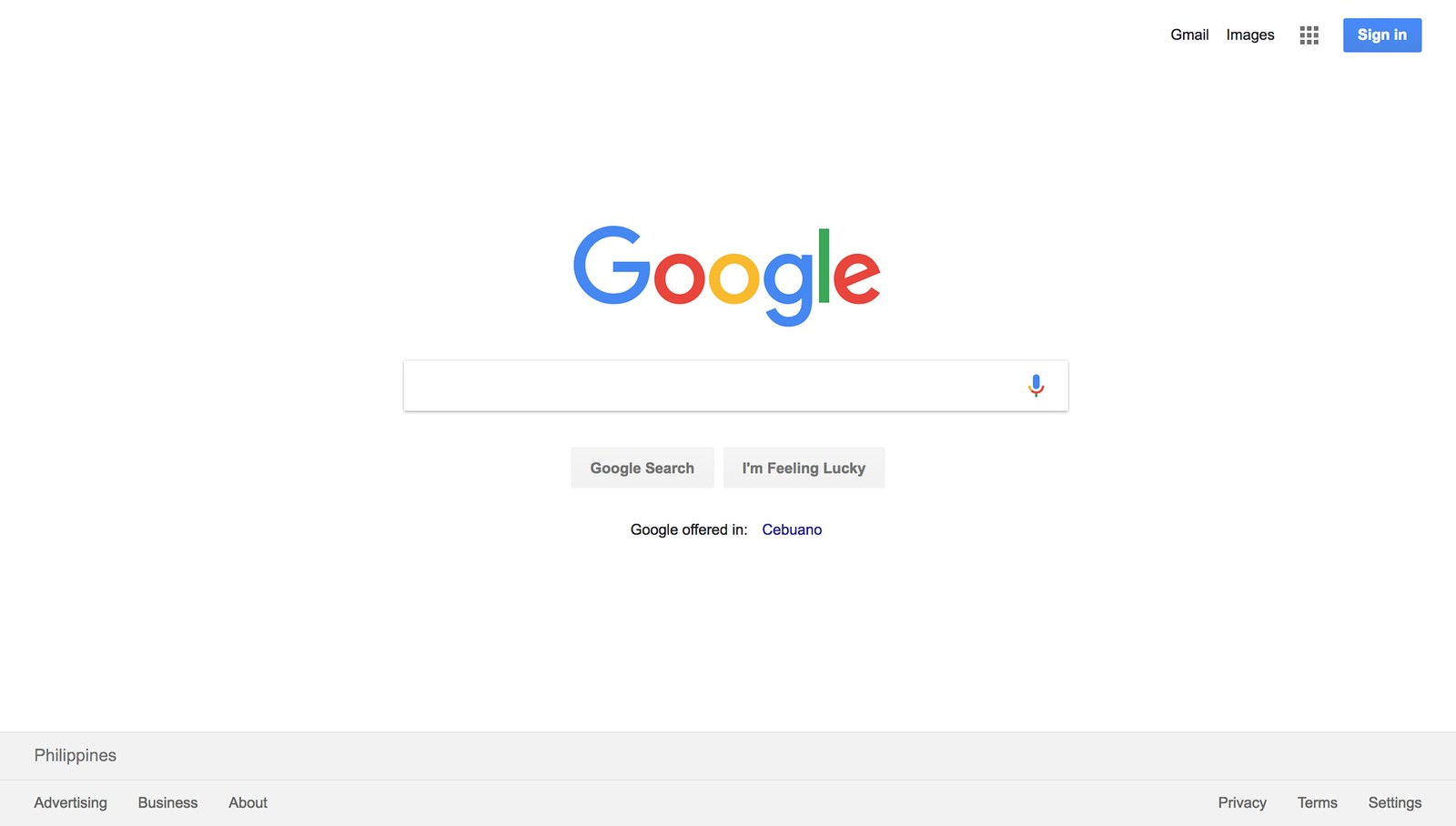
For the first episode of RE:Creation, we’ll be re-creating the most visited website in the world—Google. It looks like a fairly simple web page—both in content and functionality, so it’s a perfect choice.

For the first episode of RE:Creation, we’ll be re-creating the most visited website in the world—Google. It looks like a fairly simple web page—both in content and functionality, so it’s a perfect choice.
ntt.dysinelab.com/<section>
ntt.dysinelab.com/<multisite>
1. Readability
2. Completeness of names that are being used globally
3. Maintain hierarchy
* No .elem { .parent & { … } }
– Put font-size in object-level
Study participants saw a number of charts in six different color palettes. Just like the first study, users shared first impressions, preference, and value feedback, and the speed and accuracy with which they made decisions were captured. Source
https://www.section508.gov/blog/infographic-the-case-for-universal-design
http://web.archive.org/web/20070416110618/http://www.cmsreview.com:80/IA/glossary.html
http://web.archive.org/web/20060831192727/http://www.cmscalendar.com:80/ia-glossary.html?term=Taxonomy
http://web.archive.org/web/20070408112138/http://www.bobgoodman.net:80/main/glossary.html
http://web.archive.org/web/20070220214703/http://www.theusabilitycompany.com:80/resources/glossary.html
http://web.archive.org/web/20070417104203/http://www.iawiki.net/action=browse&id=GlossaryOfTerms&oldid=IAGlossary
http://web.archive.org/web/20070415101307/http://www.jnd.org:80/dn.mss/affordance_conventi.html
http://web.archive.org/web/20070427045700/http://www.usabilityfirst.com:80/glossary/main.cgi
http://web.archive.org/web/20070501121141/http://www.iawiki.net:80/DeliverablesAndArtifacts
https://docs.google.com/spreadsheets/d/1h2hyR1S9v_Pgv64jmNexebAIIXGQqdB58mI6TDSDzng/edit#gid=0
https://docs.google.com/spreadsheets/d/1dQMHXzwG9q3eqX8hdVKKjDCIQux7pjZM9um4lEB3yss/edit#gid=0
https://www.ischool.utexas.edu/~i385e/readings/Warner-aTaxonomyPrimer.html
We need to incorporate the possibility of moving up the employment level by breadth—encompassing the other disciplines and depth—by fulfilling the Work Efficiency Responsibility needed for the next level.
We need to fill-in the details—criteria also—for moving across and moving up. How can these be measurable?